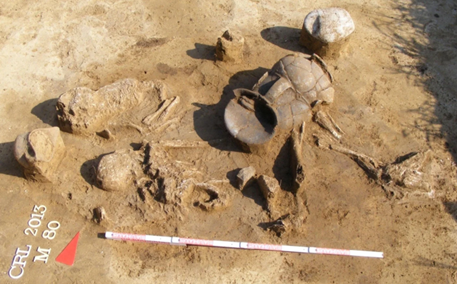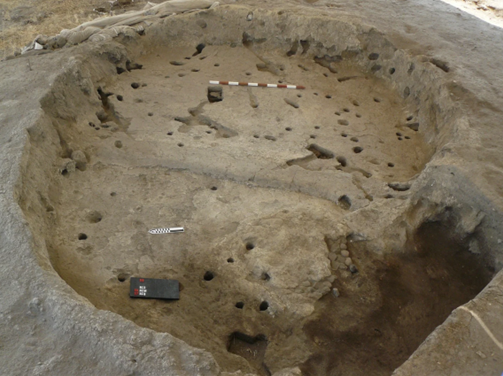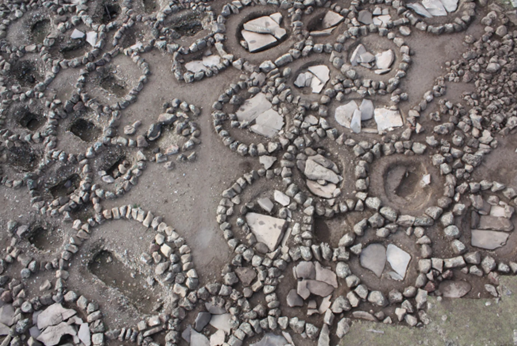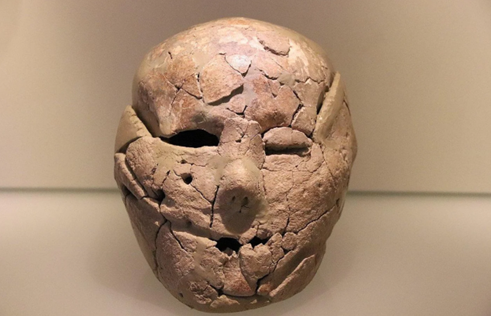
Languages, agriculture and migration from the Caucasus to the Balkans: DNA fragments dating back 11,000 years complete the puzzle of several ancient human cultures
Sapienza is in the international research team completing the analysis of the genomic data of populations in the geographical region known as the 'Southern Arc'. The results of these studies, brought together in three articles published in the journal Science, shed new light on the lifestyles of the inhabitants of past societies and the spread and diversification of their languages
Three articles, published simultaneously in the journal Science, report the genomic data of 727 ancient individuals from archaeological contexts dating back to the last 11,000 years, which confirm well-established archaeological, genetic and linguistic hypotheses and fill major gaps in the palaeogenetic record of the region defined as the 'Southern Arc'.
This geographical area stretches from the Caucasus and Levant through Anatolia and the Aegean to the Balkans, forming a bridge between Europe and Asia, where the first civilisations and early human cultures emerged and flourished, exerting a profound impact on human society as a whole.
Palaeogenetic research, which has considerably increased the amount of data on the ancient DNA of the region, has shed new light on the lifestyles of the inhabitants of past societies and the spread and diversification of their languages by putting together piece by piece the complex puzzle - hitherto very fragmentary - on the knowledge of these ancient cultures and the ways of life of these populations.
The studies were coordinated by an international team of researchers from Vienna and Harvard Universities and conducted by 202 co-authors, including Dušan Borić (Department of Environmental Biology) and Emanuela Cristiani (Department of Oral and Maxillo-facial Sciences) from Sapienza University and Francesca Candilio from the Bioarchaeology Service of the Museum of Civilisations in Rome.
The research that went into the three published articles presents a systematic picture of the - often interconnected - histories of the peoples of this region, from the origins of agriculture to the late Middle Ages.
Particularly significant is the first article on the homeland and spread of Anatolian and Indo-European languages ("The genetic history of the Southern Arc: a bridge between West Asia and Europe"), to which Sapienza researchers contributed mainly. The work presents genetic results from the Chalcolithic/Copper Age and Bronze Age periods, according to which the homeland of the Indo-Anatolian language family was in West Asia, with only secondary dispersions of non-Anatolian Indo-Europeans from the steppe. The expansions of steppe herders southwards into the Balkans and Greece and eastwards through the Caucasus into Armenia left a trace in the DNA of the region's Bronze Age peoples. The emergence of the Greek, Palaeo-Balkan and Albanian (Indo-European) languages in south-eastern Europe and the Armenian language in western Asia were formed through the interaction between Indo-European language migrants from the steppes and local populations and can be traced by various forms of genetic evidence. Some of the most striking results are to be found in the central region of the Southern Arc, Anatolia, where large-scale data show that, unlike the Balkans and the Caucasus, Anatolia was virtually unaffected by the migrations of steppe herders.
The second paper on early agricultural societies and their interactions ("Ancient DNA from Mesopotamia suggests distinct Pre-Pottery and Pottery Neolithic migrations into Anatolia") provides data on the ancient DNA of pre-Ceramic Neolithic farmers from the Tigris area of northern Mesopotamia (eastern Turkey and northern Iraq), in particular from the early Neolithic of the north-western Zagros and the Neolithic of Armenia. The authors studied the genetic history of these societies for which archaeological research has documented complex economic and cultural interactions. The genetic results support the scenario of a pan-regional network of contacts between early farming communities, showing how these agricultural cultures form a continuum of ancestry that mirrors the geography of West Asia.
The third article, which focuses on the historical period ("A genetic probe into the ancient and medieval history of Southern Europe and West Asia"), reveals that ancient Mediterranean communities have preserved traces of their diverse origins while at the same time remaining interconnected by migratory phenomena. The analyses support the theory that Greece's ancient 'Mycenaeans' can be modelled as a combination of a Yamnaya-like population of steppe origin and an Aegean-like 'Minoan' population of the Early Bronze Age in a ratio of approximately 1:10, with some distinctions highlighted in the study. The results also show that the ancestry of people living around Rome in the imperial period was almost identical to that of Roman/Byzantine individuals from Anatolia. Previous research had already demonstrated the oriental origins of many of Rome's inhabitants, but only recent studies have surprisingly allowed us to find such a specific and clear link to Anatolia itself and not to other eastern parts of the Roman Empire such as the Levant.
"Overall," says Dušan Borić, "the findings are an example of how archaeogenetic findings can shed new light on the life courses of the inhabitants of ancient societies and the spread and diversification of their languages. However, in order to address the big questions about the past with palaeogenetics, large-scale systematic research is needed to fill the current geographical and temporal gaps."
"There is still much to be discovered," concludes Emanuela Cristiani, "and only new excavations and fieldwork in the eastern parts of West Asia will allow the puzzle to be put together".
Further Information
Emanuela Cristiani
Department of Oral and Maxillo-facial Sciences
emanuela.cristiani@uniroma1.it
Dušan Borić
Department of Environmental Biology
dusan.boric@uniroma1.it
Wednesday, 07 September 2022











